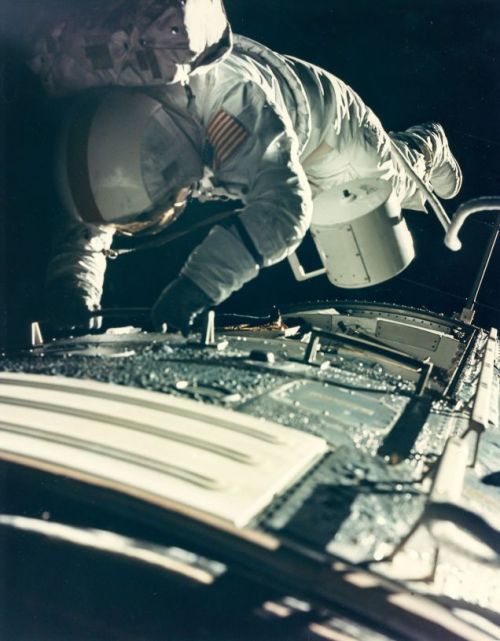Thebryanscout - 𝕭𝖗𝖞𝖆𝖓!


More Posts from Thebryanscout and Others

Happy Carldays!
Sweatshirts available through December at TeeFury.
by Pacalin
I always thought it was weird that the GeoComTex employees in this episode wore the American flag on the wrong shoulder considering the star placement.

Five Episodes: Dalek
State of NASA
Over his tenure, President Obama has now invested $147 billion in America’s space program. Our elected leaders, on a bipartisan basis, have chosen to make this investment in our Agency, because they believe in our Journey to Mars and recognize that investments in NASA’s present are investments in America’s future.
Because the State of our NASA is strong, President Obama is recommending a $19 billion budget for the next year to carry out our ambitious exploration and scientific discovery plans. Here are the areas in which we’ll continue to invest:
Solar System and Beyond

As we explore our solar system and search for new worlds, we look to answer key questions about our home planet, neighboring planets in our solar system and the universe beyond.
Journey to Mars

We’re developing the capabilities needed to send humans to an asteroid by 2025 and Mars in the 2030s. Mars is a rich destination for scientific discovery and robotic and human exploration as we expand our presence into the solar system. Its formation and evolution are comparable to Earth, helping us learn more about our own planet’s history and future.
International Space Station

Earth Right Now

We use the vantage point of space to increase our understanding of our home planet, improve lives and safeguard our future. Our Earth science work also makes a difference in people’s lives around the world every day.
Technology Drives Exploration

Sustained investments in our technology advance space exploration, science and aeronautics capabilities. We seek to improve our ability to access and travel through space; land more mass in more locations throughout our solar system; live and work in deep space and on planetary bodies; build next generation air vehicles, and transform the ability to observe the universe and answer profound questions in Earth and space sciences.
Aeronautics

Thanks to advancements in aeronautics developed by NASA, today’s aviation industry is better equipped than ever to safely and efficiently transport all those passengers to their destinations.

The President’s FY 2017 budget provides $790 million to our Aeronautics Research Mission Directorate. This investment will accelerate aviation energy efficiency, advance propulsion system transformation and enable major improvements in aviation safety and mobility. The future of flight will: utilize greener energy, be half as loud, use half the fuel and will create quieter sonic booms.
State of NASA Social

Today, we have opened our doors and invited social media followers and news media to an in-person event, at one of our 10 field centers. Guests will go on a tour and see highlights of the work we’re doing. You can follow along digitally on Twitter: https://twitter.com/NASASocial/lists/state-of-nasa-all1.
Check our Twitter Moment HERE.
Did you miss NASA Administrator Bolden’s remarks? You can watch a full recap HERE.
For all budget related items, visit: http://www.nasa.gov/news/budget/index.html
Make sure to follow us on Tumblr for your regular dose of space: http://nasa.tumblr.com

Ronald Evans’ EVA, the last in deep space, Apollo 17, December 1972
via reddit
![NASA Has Released More Than 8,000 Images Of The Apollo Missions. [flickr Archive]](https://64.media.tumblr.com/cf7647bb219a067b5e94cbc26c064a60/tumblr_nvmcqrT6NK1qbuzjco8_500.jpg)
![NASA Has Released More Than 8,000 Images Of The Apollo Missions. [flickr Archive]](https://64.media.tumblr.com/c66698f2bbea9142a0de0f6341aae88e/tumblr_nvmcqrT6NK1qbuzjco7_500.jpg)
![NASA Has Released More Than 8,000 Images Of The Apollo Missions. [flickr Archive]](https://64.media.tumblr.com/7a568cc8ff23d2d46648fd2b5e41f692/tumblr_nvmcqrT6NK1qbuzjco1_500.jpg)
![NASA Has Released More Than 8,000 Images Of The Apollo Missions. [flickr Archive]](https://64.media.tumblr.com/2fb70c73872eb83201fa9e777920a56b/tumblr_nvmcqrT6NK1qbuzjco2_500.jpg)
![NASA Has Released More Than 8,000 Images Of The Apollo Missions. [flickr Archive]](https://64.media.tumblr.com/70d483fd397901bdff3d619c315ad472/tumblr_nvmcqrT6NK1qbuzjco3_500.jpg)
NASA has released more than 8,000 images of the Apollo missions. [flickr archive]
A reminder that NASA isn’t the only space agency
I have seen many “Space achievements 2015” articles and posts leaving international accomplisments completely out, so here are some of them:
1. A new type of basaltic rock on the moon was found by Chinese robotic lander.
China National Space Administration’s Chang’e-3 landed on the Moon on 14 December 2013, becoming the first spacecraft to soft-land since the Soviet Union‘s Luna 24 in 1976.

2. On February 11, the European Space Agency, ESA, successfully launched on a suborbital trajectory and recovered an experimental wingless glider, IXV.
It became the first true “lifting body” vehicle, which reached a near-orbital speed and then returned back to Earth without any help from wings.

3. On December 9, Japan’s Akatsuki spacecraft succeeded entering orbit of Venus.
Japan Aerospace eXploration Agency’s Akatsuki is the first spacecraft to explore Venus since the ESA’s Venus Express reached the end of its mission in 2014.

4. ESA’s Rosetta spacecraft detected oxygen ‘leaking’ from comet 67P/Churyumov-Gerasimenko, the first time these molecules have been seen around a comet.
Rosetta spacecraft, the first to drop a lander (named Philae) on a comet, entered orbit around 67P in 2014 and continues to orbit the body. On June 13, European Space Operations Centre in Darmstadt, Germany, received signals from the Philae lander after months of silence.

5. The Canadian Space Agency has provided NASA with a laser mapping system that will scan an asteroid that could potentially hit the Earth in about 200 years

6. The high-resolution stereo camera on ESA’s Mars Express captured this sweeping view from the planet’s south polar ice cap and across its cratered highlands and beyond.

find Sci-Universe on Tumblr, Instagram & Facebook
Ohne dich kann ich nicht sein, Ohne dich, Mit dir bin ich auch allein, Ohne dich, Ohne dich zähl ich die Stunden, Ohne dich, Mit dir stehen die Sekunden, Lohnen nicht
Rammstein, Ohne Dich (2004, Reise, Reise)


me

“I could do so much more.”
-
 jspacestationmus liked this · 1 week ago
jspacestationmus liked this · 1 week ago -
 emily33-me liked this · 4 months ago
emily33-me liked this · 4 months ago -
 ebigo13 liked this · 1 year ago
ebigo13 liked this · 1 year ago -
 aonghus-the-highlander liked this · 1 year ago
aonghus-the-highlander liked this · 1 year ago -
 squishymamasboy reblogged this · 2 years ago
squishymamasboy reblogged this · 2 years ago -
 veroricamars reblogged this · 2 years ago
veroricamars reblogged this · 2 years ago -
 hazoffstyles liked this · 2 years ago
hazoffstyles liked this · 2 years ago -
 izzyfromdeadspace reblogged this · 2 years ago
izzyfromdeadspace reblogged this · 2 years ago -
 lettherebemonsters reblogged this · 2 years ago
lettherebemonsters reblogged this · 2 years ago -
 leraserhead reblogged this · 3 years ago
leraserhead reblogged this · 3 years ago -
 rockn-rule liked this · 3 years ago
rockn-rule liked this · 3 years ago -
 nanpereirab liked this · 3 years ago
nanpereirab liked this · 3 years ago -
 tooxldtorememxer liked this · 3 years ago
tooxldtorememxer liked this · 3 years ago -
 arcanigenum reblogged this · 3 years ago
arcanigenum reblogged this · 3 years ago -
 the-latin liked this · 3 years ago
the-latin liked this · 3 years ago -
 robinchan-hananomi reblogged this · 3 years ago
robinchan-hananomi reblogged this · 3 years ago -
 forest-green-1994 liked this · 3 years ago
forest-green-1994 liked this · 3 years ago -
 nuriakendo reblogged this · 4 years ago
nuriakendo reblogged this · 4 years ago -
 smileandbeavillain reblogged this · 4 years ago
smileandbeavillain reblogged this · 4 years ago -
 nuriakendo liked this · 4 years ago
nuriakendo liked this · 4 years ago -
 satans-lil-angel liked this · 4 years ago
satans-lil-angel liked this · 4 years ago -
 gaypkins liked this · 4 years ago
gaypkins liked this · 4 years ago -
 mybelovedisdead liked this · 4 years ago
mybelovedisdead liked this · 4 years ago -
 starving-artists--broken-hearts reblogged this · 4 years ago
starving-artists--broken-hearts reblogged this · 4 years ago -
 starving-artists--broken-hearts liked this · 4 years ago
starving-artists--broken-hearts liked this · 4 years ago -
 she-writes-nostalgia liked this · 4 years ago
she-writes-nostalgia liked this · 4 years ago -
 supersherlockphonebox-blog liked this · 4 years ago
supersherlockphonebox-blog liked this · 4 years ago -
 gustavfring reblogged this · 4 years ago
gustavfring reblogged this · 4 years ago -
 gustavfring liked this · 4 years ago
gustavfring liked this · 4 years ago -
 spacejew liked this · 4 years ago
spacejew liked this · 4 years ago -
 anchoriteairmed liked this · 4 years ago
anchoriteairmed liked this · 4 years ago -
 wayward-bagginses reblogged this · 4 years ago
wayward-bagginses reblogged this · 4 years ago -
 blanche-the-hope liked this · 5 years ago
blanche-the-hope liked this · 5 years ago -
 behindallthings liked this · 5 years ago
behindallthings liked this · 5 years ago -
 ittybritty liked this · 5 years ago
ittybritty liked this · 5 years ago -
 jessieconstantine1999 liked this · 5 years ago
jessieconstantine1999 liked this · 5 years ago -
 sin4days reblogged this · 5 years ago
sin4days reblogged this · 5 years ago -
 the--king--in--yellow liked this · 5 years ago
the--king--in--yellow liked this · 5 years ago -
 chloeisrandom13 liked this · 5 years ago
chloeisrandom13 liked this · 5 years ago -
 persephone-on-main liked this · 5 years ago
persephone-on-main liked this · 5 years ago -
 ifridiot liked this · 5 years ago
ifridiot liked this · 5 years ago -
 godadorgohome reblogged this · 5 years ago
godadorgohome reblogged this · 5 years ago
21, He/Him/His, lover of all things space, aviation, alt music, film, and anime
255 posts